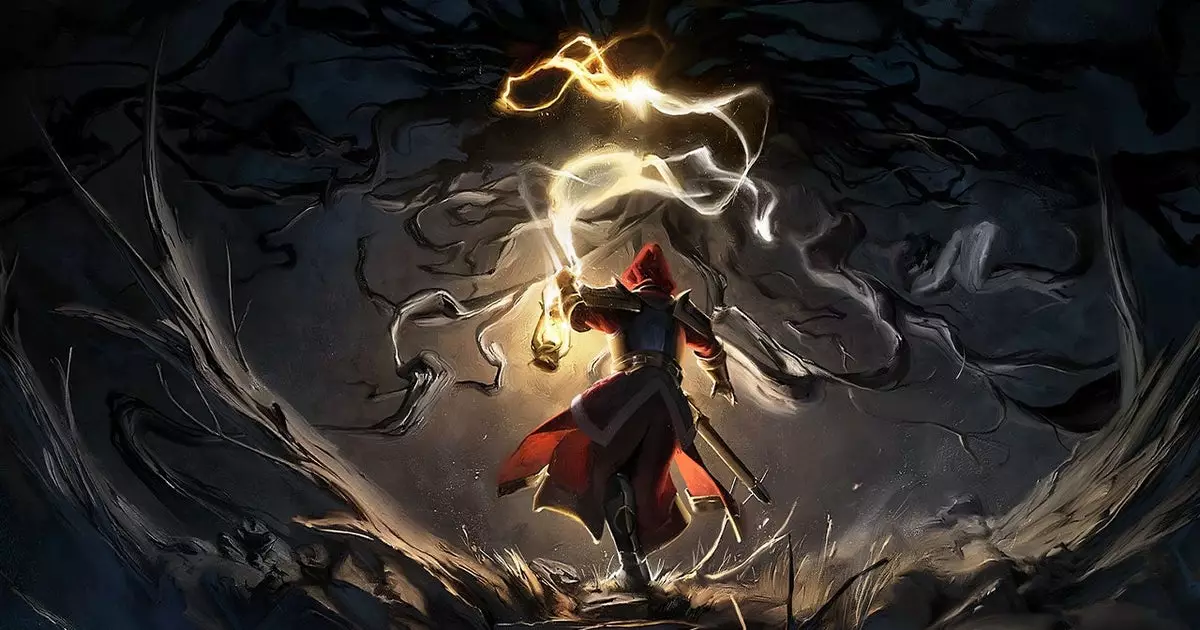In an era where gameplay mechanics often overshadow storytelling, Mandragora: Whispers Of The Witch Tree boldly positions itself as a narrative-centric action RPG that strives to weave an intricate tapestry of dark fantasy. The game ostensibly arrives at a crucial juncture in the gaming landscape, where players increasingly crave not just mechanics but substantive, engaging narratives. Upon my initial exposure to the title, skepticism loomed large. Did it merely pass as another side-scroller in a crowded genre, or did it truly deliver a fresh experience?
The first sign of promise lay in its world-building. Set against a backdrop of apocalyptic chaos, players find themselves in Crimson City, a place manifested through vibrant visuals and an engrossing storyline. Helmed by a tyrannical figure reminiscent of Judge Claude Frollo—complete with a fervor for oppression—Mandragora effectively invites players into its grim reality. The story is not merely a backdrop but a living part of the game, gripping players from the onset as they assume the role of a reluctant inquisitor. This narrative framework raises the stakes considerably, making each combat encounter more than just a clash of weapons; it intertwines personal stakes with larger, morally ambiguous dilemmas involving witches and their torturers.
Engaging Combat Mechanics: A Balancing Act
While storytelling serves as the foundation, the mechanics themselves are equally critical to the experience. Mandragora adopts a hybrid style that marries nostalgia with innovation. Players wield both primary weapons and auxiliary tools—be it a spell or shield—while engaging in combat that emphasizes evasion and stamina. This focus on resource management adds a layer of strategy that is often absent in simpler action titles, prompting players to embrace a more calculated approach as they confront the nightmarish creatures lurking in the shadows.
However, the combat animations and controls could use fine-tuning. Occasional halts and clunky movements detract from the otherwise immersive experience, which might leave some players disoriented in the heat of battle. In an age where fluid motion is the benchmark for action games, Mandragora unfortunately stumbles, yet it manages to maintain an engaging core. The beauty of this game is how it intertwines combat with exploration; levels are labyrinthine, filled with secrets waiting to be uncovered, inviting players to delve deeper rather than just grind mindlessly.
A Unique Visual Experience
One of the game’s standout features is its artistic direction. The character portraits, reminiscent of grotesque paintings, add a haunting feel to the narrative. While some players may find these visuals off-putting, they create an atmosphere ripe with unease, perfectly complementing the darker themes of the game. Artistic choices can often make or break a title, and in this instance, the distinctive style adds to the allure rather than detracting from it.
The meticulously designed environments of Crimson City and its surrounding areas evoke the atmospheric depth that titles like Dark Souls are renowned for. Locations are thoughtfully crafted to give players the sense of having a shared history, each corner of the map marking a moment of suffering, struggle, and survival. This depth makes exploration—be it through secret entrances or hidden platforms—a rewarding venture that extends beyond mere gameplay mechanics.
Characterization: More Than Just NPCs
A remarkable aspect of Mandragora lies in its handling of characterization, particularly the interactions with non-playable characters (NPCs). Rather than mere vessels for quests, these characters resonate with life, each line loaded with personality that hints at a greater context. The delightful blend of humor and gravity in dialogues—like that of the merchant cursing after the player smashes her crates—gives the game an organic feel that some contemporary RPGs often neglect.
Through these interactions, players more readily invest emotionally in the city’s plight, creating a foundation for their journey. It’s a testament to the developers’ commitment to crafting a rich narrative experience—one that blends gameplay with character arcs seamlessly.
Overall, Mandragora: Whispers Of The Witch Tree emerges not just as another action RPG, but as a captivating synthesis of story, character, and mechanic. As I delve deeper into its world, the promise of hours spent exploring its dark and richly woven narrative excites rather than daunts. The potential for a transformative gaming experience is palpable, and this title is a spectacle that deserves attention in the ever-growing realm of video games.

